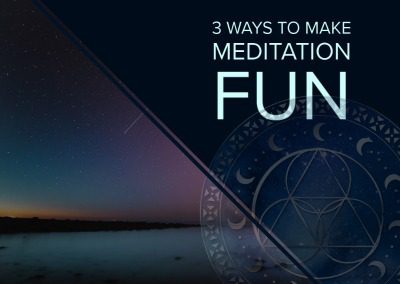I have ADD and it was not easy for me to concentrate long enough to “get into” that no-mind meditative state. I get bored easily. My mind wanders. Then I’d get frustrated at myself because my mind would wander. Then I’d analyze WHY my mind wanders and that lead to an entire Alice in Wonderland trip down the proverbial rabbit hole. Needless to say, with the self-condemnation and constant mind activity, it wasn’t a pleasant experience. So I avoided it. Which wasn’t good because in any spiritual practice, meditation is key. Then I learned something that was life-changing: The no-mind method of meditation was developed by corporations to help their executives not think about how stressed out they were at work. God forbid should they realize they hated their jobs and quit! The solution was to teach them to go to the state of no-mind, where they empty their brain and think about nothing. Especially how much they hate their jobs.
Well, I don’t know about you but I’m not a stressed-out corporate executive and I don’t need to escape from a miserable career. So WHY am I meditating like I do?!
I had to find a way not only enjoy meditation, but look forward to it. Here are the three things I did (and you can do) to do that:
FIND THE TECHNIQUE THAT WORKS FOR YOU
First, let’s talk about what meditation actually IS. I want you to redefine what you think meditation is. Getting the brain into a meditative state is akin to getting it “in the zone”. That is, so intently focused on that one activity, idea or “thing” that everything else falls off your radar. You are singularly focused.
Three words, people: World of Warcraft. Yes. I can play that game for HOURS and consciously believe I am living in Azeroth, completing quests with fellow gamers. I am focused. I am happy. I am aware of what I am doing while in this state of mind. What is meditation, if not that?! When I need stress relief, I log in and I meditate. So don’t be hard on yourself if video games are your thing. If it gets you into that happy, focused state of mind, it’s beneficial.
Gaming is one way I meditate but sometimes I just need to go inward. That requires another meditation method. I found the one that works best for me is the seed of thought technique. This is where you take a concept or idea (like “peace” or “love”) and then focus on it. If a thought arises, follow that thought like a breadcrumb trail and see where it leads. Don’t judge, just go. For me, this version of meditation is actually more relaxing and lead to more self-discovery than the no-mind method. I didn’t judge myself for not maintaining an empty mind. I just observed and noted.
USE TOOLS
Another technique I implemented was the use of tools. One of those tools was the book and accompanying audio “Getting in the Gap” by Dr. Wayne Dyer. It made me understand I didn’t need to sit lotus style for hours with a blank mind to benefit from meditation. You are going to have thoughts pop in and out. It’s about consciously residing in that “space between” one thought and the next. Being aware that you ARE in the gap. This audio meditation will teach you how to move from one thought, to the next then back to that space.
ESTABLISH A ROUTINE
Routines are huge for people with add/adhd. If i don’t have the important stuff on auto-pilot, it doesn’t get done. So i make sure i work out, meditate and journal at the same time each day. I also use “triggers”. Things that signal to my mind and body that meditation is about to happen. I start out with the same music. I also have a ritual i do with sage (the smell is the trigger) and grounding. After doing this repeatedly, with one specific song and the smell of sage, i can instantly be in the theta brain state. you can train your mind the same way.my last piece of advice is this – don’t stress over not being in what you think is the “meditative” state of mind or that you’re not doing it “right”. You’re going to have thoughts arise and that’s ok. If you’re having problems staying in the empty space, that’s ok too. The point is, all meditation is beneficial, no matter the length of time. With a repetitive routine, your mind and body will know meditation is supposed to happen and it will naturally go there. So, find your favorite technique, establish a routine, get some tools and actually enjoy meditation!

